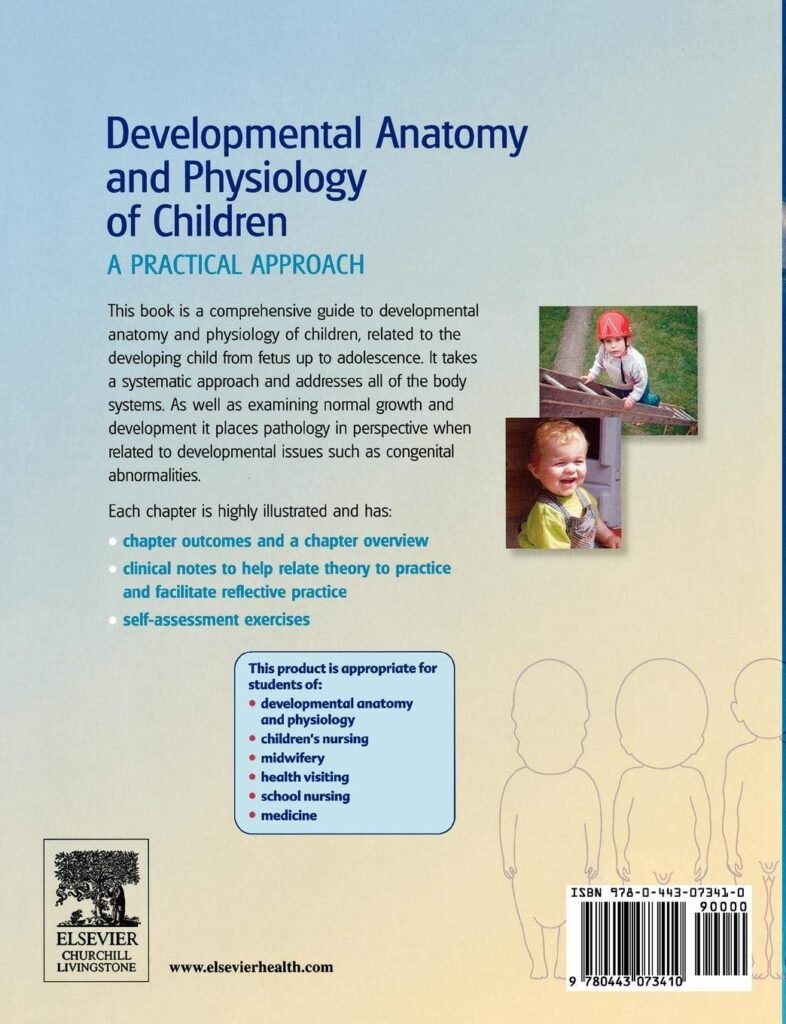How well do you know the changing bodies of children? As you see them grow, you might often wonder about the rapid transformations occurring in their development. “Developmental Anatomy and Physiology of Children: A Practical Approach 1st Edition” aims to unveil these mysteries for professionals and enthusiasts alike. With its unique take on childhood anatomy and physiology, this book offers a comprehensive journey into the intricate world of children’s developmental stages.
Understanding Child Development
Understanding how a child’s body evolves is fascinating and essential. This book attempts to bridge the gap between fascination and comprehension, providing information that’s both approachable and scholarly.
Why This Book Matters
This isn’t just another academic text; it’s an essential resource for anyone working in pediatrics, child healthcare, or even parents keen on understanding their children’s biology. The focus on practical application makes it a standout, ensuring the information is both relevant and immediately useful.
Who Should Read This Book
Anyone with a vested interest in the wellbeing of children will find value here. It’s particularly valuable for medical students, pediatricians, nurses, and childcare professionals. Even teachers may find it useful to understand the physical and psychological state of the children they teach.
Developmental Anatomy and Physiology of Children: A Practical Approach 1st Edition
$42.43 In stock
Breaking Down the Anatomy
Anatomy can often seem daunting, with its complex systems and terminology. However, the book breaks down these concepts into digestible pieces without oversimplification.
The Childhood Journey
You will navigate from infancy through adolescence, observing how changes in anatomy correspond with stages of emotional and intellectual growth. Every chapter is an eye-opener, connecting physical development to broader aspects of child growth.
Clear Diagrams and Illustrations
Visual aids strengthen the text by providing a clearer understanding of how organs and systems develop. The illustrations are not just decorative; they serve a practical purpose by clarifying the concepts discussed, making it easier to retain the information.
| Development Stage | Key Physical Changes | Corresponding Emotional Changes |
|---|---|---|
| Infancy | Rapid bone growth | Attachment formation |
| Early Childhood | Motor skill development | Beginning of independence |
| Middle Childhood | Growth in stature and strength | Development of self-esteem |
| Adolescence | Hormonal changes | Identity formation |
Delve into Physiology
Understanding physiology in children combines the excitement of science with the reality of health. The book walks you through how the basic functions of life progress in significantly different ways as children mature.
Physiology Stages
Physiology isn’t static; it’s dynamic and ever-changing. Observe how tissues develop and organize into functioning systems, underscoring the complexity and wonder of human biology.
Simplifying Complex Processes
Each physiological chapter dissects complex processes into steps or flowcharts, distilling intricacies into manageable insights. These explanations ensure you’re never lost in technical jargon, making the learning experience enjoyable rather than overwhelming.
Practical Knowledge in Healthcare
Applying knowledge in real-world scenarios is critical, and that’s where this book shines. It takes theoretical knowledge and shows you how to put it into practice.
Case Studies
Case studies anchor the academic material, providing real-life contexts that enhance understanding. They showcase typical case scenarios you might encounter, relating symptoms to underlying anatomical changes, thus giving a clearer picture of what to expect in professional settings.
Readiness for Application
Beyond theoretical knowledge, you’ll learn how to integrate what you’ve learned into everyday situations. Whether diagnosing developmental disorders or understanding typical behavioral changes, you’ll walk away more equipped.
A Holistic Approach
The book integrates anatomy and physiology into a broader context of how they affect the overall health and growth of the child.
Beyond Physical Growth
There is a considerate treatment of how physical changes impact psychosocial development. Understanding how a child perceives their growth is crucial, especially during the often tumultuous adolescent years.
Interconnected Systems
Every system within the book is treated not as an isolated entity but as part of a network, emphasizing how they work together to sustain the overall health of the child.
Conversational Yet Scholarly
This text strikes a balance between being engaging and informative, a rare feat for academic publications.
Tone and Style
The book’s approachable language ensures that complex concepts are explained simply without losing depth. This conversational style puts you at ease, transforming what could be a dense topic into a thrilling exploration.
Final Thoughts
“Developmental Anatomy and Physiology of Children: A Practical Approach 1st Edition” is an essential read for anyone eager to grasp the complexities of child development. It equips you not just with information, but with the insights necessary for practical application. As you turn each page, you get a little closer to understanding the marvelous journey of growing up, helping you engage more meaningfully with the development of the young individuals in your life.
Disclosure: As an Amazon Associate, I earn from qualifying purchases.





